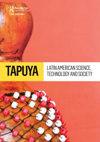媒体对第一个MRT婴儿的分析
IF 1.2
Q2 HISTORY & PHILOSOPHY OF SCIENCE
Tapuya: Latin American Science, Technology and Society
Pub Date : 2023-09-14
DOI:10.1080/25729861.2023.2245990
引用次数: 1
摘要
2016年,第一个使用线粒体替代技术(MRT)的婴儿诞生了,这是一个国际团队在墨西哥诊所进行的手术。这个故事很快就被国际媒体报道,作者被指定为美国队,墨西哥被描述为缺乏监管,因此是一个合适的地点。墨西哥媒体提供了一个不同的版本。婴儿被盖上了“墨西哥制造”的印章,参与其中的墨西哥医生被描述为一位杰出的公民和大胆的科学家。这个故事与新闻界和学术界流传的故事相反。它打破了墨西哥是一个“没有规则”的国家的观念,取而代之的是一个生产尖端技术的国家和一个准备支持科学进步的政府的故事。在本文中,我们分析了将这一突破转化为国家成功的表演行为,并询问了墨西哥队在这一成就中所扮演的角色。这一分析有助于后殖民科学技术研究领域内关于知识生产、作者身份和科学故事在国家建设过程中的作用的对话。本文章由计算机程序翻译,如有差异,请以英文原文为准。
“Hecho en México”: a media analysis of the first MRT baby
2016 witnessed the birth of the first baby conceived using mitochondrial replacement technology (MRT), a procedure conducted by an international team in a Mexican clinic. The story soon made it to the international press, where authorship was assigned to the USA team and Mexico was described as lacking regulation, thus a suitable location. The Mexican media offered a different version. The baby was stamped as “made in Mexico” and the Mexican physician involved was described as a remarkable citizen and bold scientist. The story served as a counter-narrative to the one circulating in the press and academic circles. It dismantled the notion of Mexico as a country with “no rules” and instead offered a story of a country producing cutting-edge technology and of a government ready to back up scientific progress. In this paper, we analyze the performative acts that transformed this breakthrough into a national success and we ask about the role the Mexican team had in this accomplishment. This analysis contributes to the conversation held within the field of postcolonial science and technology studies, regarding knowledge production, authorship, and the role of science stories in the process of nation building.
求助全文
通过发布文献求助,成功后即可免费获取论文全文。
去求助
来源期刊

Tapuya: Latin American Science, Technology and Society
Social Sciences-Social Sciences (all)
CiteScore
1.60
自引率
0.00%
发文量
39
审稿时长
19 weeks
 求助内容:
求助内容: 应助结果提醒方式:
应助结果提醒方式:


